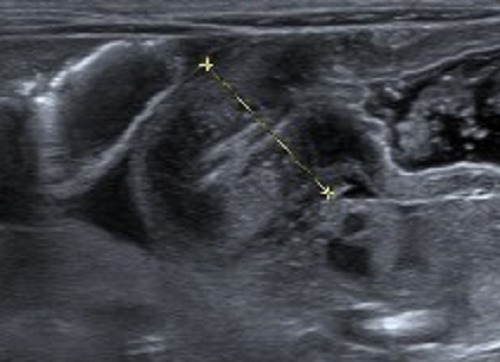Playlist
Show Playlist
Hide Playlist
Hypertrophic Pyloric Stenosis: Management
-
Slides Hypertrophic pyloric stenosis Special Surgery.pdf
-
Download Lecture Overview
00:01 Once we've diagnosed hypertrophic pyloric stenosis, how do we manage the patient? Very important, very high yield. 00:09 You should remember this. 00:11 Correct the electrolyte abnormalities first. 00:14 If you're tempted to go to the operating room first, the patient may actually have significant respiratory complications postoperatively. 00:22 Remember, alkalosis due to the projectile vomiting is associated with postoperative apnea. 00:30 Babies do not have a significant wiggle room, and therefore, any period of postoperative apnea can lead to death. 00:40 Here’s surgery, my favorite part, a pyloromyotomy. 00:45 Whether it’s done open or laparoscopic, although when baby is opened, it’s just with a tiny little incision. 00:51 The pyloric channel is exposed like on the left side of the screen. 00:56 And on the right side of the screen, the pyloric channel has been opened down to the level of the mucosa. 01:02 Notice already that there's much more of a generous pyloric channel. 01:06 Be careful, though. 01:07 Make sure you don't go full-thickness. 01:13 Look at the baby now. 01:14 Postoperatively, this is the part I was describing as quite rewarding. 01:20 Babies can be fed almost right away after surgery. 01:23 Intolerance of feeds, the initial few times, is absolutely normal. 01:27 Give them some time. 01:29 Sometimes there’s a little bit of postoperative swelling. 01:33 Now, let's review some important clinical pearls and high-yield information. 01:38 Remember, electrolyte disturbances are very important to correct prior to surgery. 01:43 You do not want postoperative apnea in your baby in an otherwise very, very well-tolerated surgery. 01:51 For your examination, remember, vomiting in pyloric stenosis is non-bilious due to its inability to mix with bile in the duodenum. 02:00 But, remember, not all non-bilious emesis is due to hypertrophic pyloric stenosis. 02:09 Thank you very much for joining me on this discussion of hypertrophic pyloric stenosis.
About the Lecture
The lecture Hypertrophic Pyloric Stenosis: Management by Kevin Pei, MD is from the course Special Surgery.
Included Quiz Questions
What is the most appropriate initial management of hypertrophic pyloric stenosis?
- Correct electrolyte abnormalities
- Correct metabolic acidosis
- Give H2 receptor blocker
- Laparoscopic pyloromyotomy
- Open pyloromyotomy
Which of the following is the procedure of choice for surgical management of hypertrophic pyloric stenosis?
- Pyloromyotomy
- Partial gastrectomy
- Sleeve gastrectomy
- Bariatric surgery
- Roux-en-y bypass
Customer reviews
5,0 of 5 stars
| 5 Stars |
|
5 |
| 4 Stars |
|
0 |
| 3 Stars |
|
0 |
| 2 Stars |
|
0 |
| 1 Star |
|
0 |




